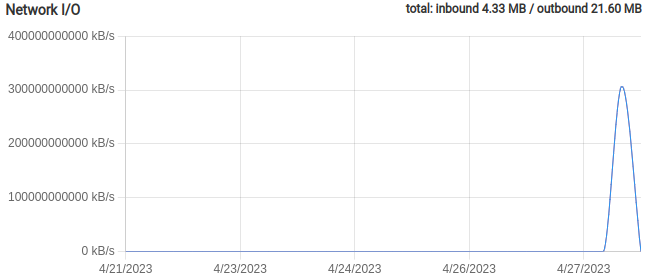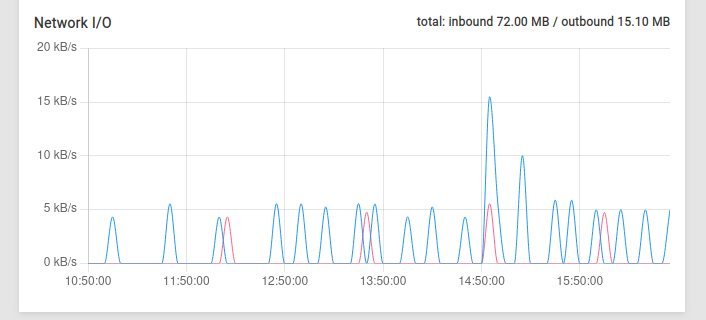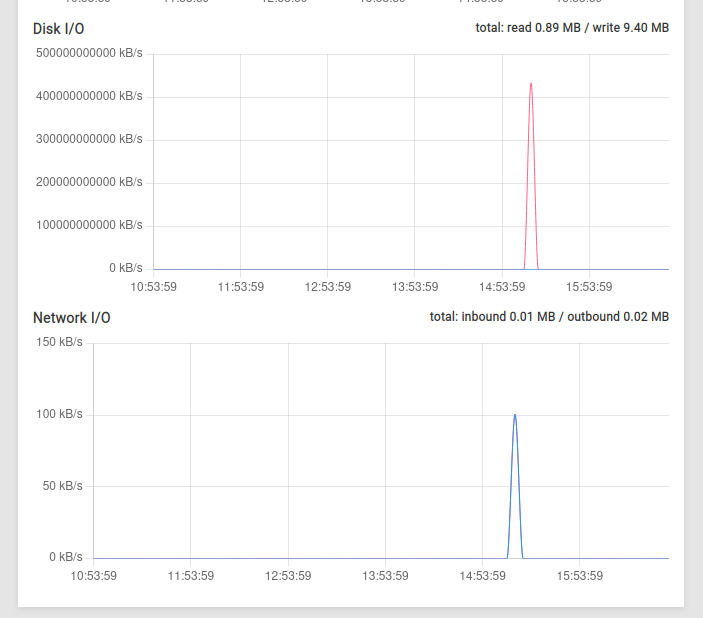-
 N nebulon moved this topic from Support on
N nebulon moved this topic from Support on
-
In the network I/O graph, the data unit used is the kilobyte. The issue here is that it's not very useful from an analysis perspective. Shouldn't this be either configurable by an admin/by default be in mB.

-
In the network I/O graph, the data unit used is the kilobyte. The issue here is that it's not very useful from an analysis perspective. Shouldn't this be either configurable by an admin/by default be in mB.

-
 G girish moved this topic from Feature Requests on
G girish moved this topic from Feature Requests on
-
Where can one find this graph?
Edit: ah in the Graphs section of App Settings.
Here's one of mine:

Update:
And here another where Disk I/O has a similar strange issue to what @Lanhild is seeing in his Network I/O

-
Where can one find this graph?
Edit: ah in the Graphs section of App Settings.
Here's one of mine:

Update:
And here another where Disk I/O has a similar strange issue to what @Lanhild is seeing in his Network I/O

-
@jdaviescoates can you post the output of
docker stats?@girish said in Application network I/O graph shouldn't be in kilobytes per second:
@jdaviescoates can you post the output of docker stats ?
From where?
The Web Terminal of the App in question? Didn't seem to work there so I ssh'd into the server and ran it there.
The line for the app in question (with the funny Disk I/O graph) is:
CPU % MEM USAGE / LIMIT MEM % NET I/O BLOCK I/O PIDS 5.81% 293.4MiB / 2.4GiB 11.94% 805kB / 914kB 363MB / 13.3MB 18Does that shed any light on anything?
-
 G girish marked this topic as a question on
G girish marked this topic as a question on
-
@Lanhild Do you see this in all views? It seems like something is corrupt. After all the inbound and outbound is so low, it seem unlikely the network speed I/O is so high.
-
 J james has marked this topic as solved on
J james has marked this topic as solved on
